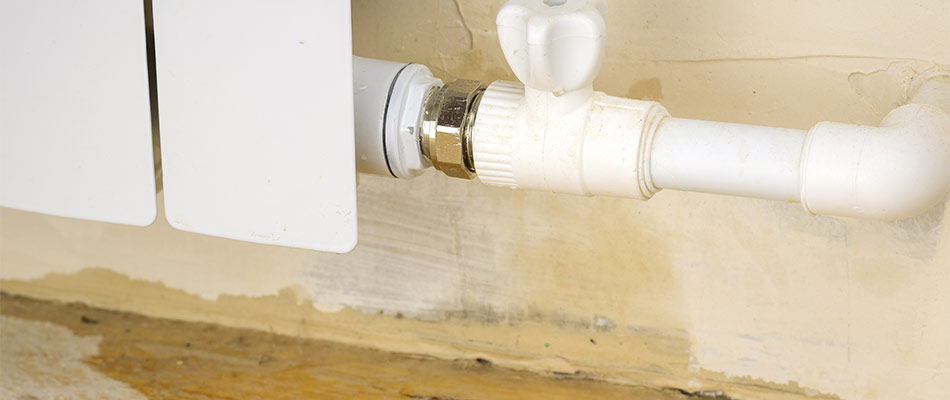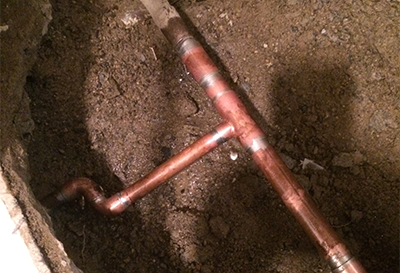Exactly how to Check If Your Home Has a Hidden Leakage
Exactly how to Check If Your Home Has a Hidden Leakage
Blog Article
Right here down the page you might get some exceptional tips in regards to Locating water leaks.

Early discovery of dripping water lines can minimize a possible calamity. In addition to conserving you money, it will lessen the aggravation and aggravation. The moment you locate a leakage, calling your plumber for repair work is the best solution. Some small water leaks may not be noticeable. Right here are some hacks that aid if you can not discover it with your nude eyes.
1. Check Out the Water Meter
Inspecting it is a surefire way that aids you uncover leaks. If it moves, that indicates a fast-moving leakage. This means you may have a sluggish leak that could also be below ground.
2. Examine Water Intake
Assess your water expenses and track your water intake. As the one paying it, you need to notice if there are any discrepancies. If you spot sudden changes, despite your intake coinciding, it suggests that you have leakages in your plumbing system. Keep in mind, your water expense must fall under the same array each month. An unexpected spike in your bill shows a fast-moving leak.
On the other hand, a consistent increase every month, despite having the same behaviors, shows you have a slow-moving leak that's additionally gradually rising. Call a plumber to extensively inspect your home, specifically if you feel a cozy area on your floor with piping below.
3. Do a Food Coloring Test
When it comes to water consumption, 30% comes from toilets. If the shade somehow infiltrates your bowl throughout that time without flushing, there's a leakage between the tank and dish.
4. Asses Exterior Lines
Don't forget to examine your outdoor water lines also. Test spigots by attaching a yard pipe. Ought to water permeate out of the link, you have a loosened rubber gasket. Change this and also ensure all connections are tight. It will help get it expertly analyzed as well as preserved every year if you have actually got a sprinkler system. One small leak can squander tons of water and spike your water costs.
5. Evaluate the situation and evaluate
Home owners must make it a practice to examine under the sink counters and also inside cupboards for any type of bad odor or mold development. These two red flags suggest a leak so punctual interest is required. Doing regular assessments, even bi-annually, can conserve you from a major issue.
Inspect for discolorations and also compromising as a lot of pipes and also home appliances have a life expectations. If you presume leaking water lines in your plumbing system, do not wait for it to escalate.
Early discovery of leaking water lines can reduce a prospective catastrophe. Some small water leaks may not be visible. Examining it is a guaranteed way that aids you uncover leaks. One tiny leakage can waste loads of water and increase your water expense.
If you believe dripping water lines in your plumbing system, do not wait for it to escalate.
How to Know If Your Home Has a Hidden Leak
Water Meter Reveals Inexplicable Water Usage
If you’d like to test whether or not there’s a leak somewhere in your home, you can do this using your water meter. Here is how to conduct the test:
Don’t use any water in your home for at least 30 minutes; this also means not turning on faucets or water-using appliances.
Go outside, and check your water meter for activity.
If your water meter shows that there was activity, even though no one was using any water, this proves that there is a leak in your home.Visible Mold or Mildew Growth
Leaks behind walls create moist, dark environments that allow mold and mildew to grow and thrive. Eventually, you might see mold growth forming on the wall closest to a hidden leak.
If mold is growing in an area that receives a high amount of moisture, such as a bathroom, it may simply be an indication that better ventilation is needed. However, if you see mold growth on a wall or the ceiling in an area where you would not expect, you probably have a hidden leak.
Musty, Mildew Odor
Sometimes you might not be able to see the mold or mildew that is growing as a result of a leak. However, the smell can give the problem away just as easily. If you catch a whiff of something musty, there’s a good chance that old water is collecting somewhere in your home that you can’t see.
Stained/Warped Walls, Ceilings, or Floors
When your home soaks up water, a variety of red flags can become visible, including ceiling stains, bubbling drywall, warped walls, and sagging floors. While these issues can be caused by excess humidity, they can also be signs that a pipe or plumbing connection has started leaking behind your walls.
Inexplicably High Water Bill
After a while, you get a general sense for what your water bill should be. If you own a pool or sprinkler system, your bill will tend to be higher during summer. However, if you receive a water bill that seems especially high, and you can’t figure out what caused it, then you may have a hidden leak somewhere that’s increasing your bill.
https://www.plumbingjoint.com/blog/2019/july/how-to-know-if-your-home-has-a-hidden-leak/

We had been made aware of that write-up on Leaking water lines from someone on a different web blog. Sharing is good. You never know, you may very well be helping someone out. We enjoy reading our article about Detecting hidden plumbing leaks.
Report this page